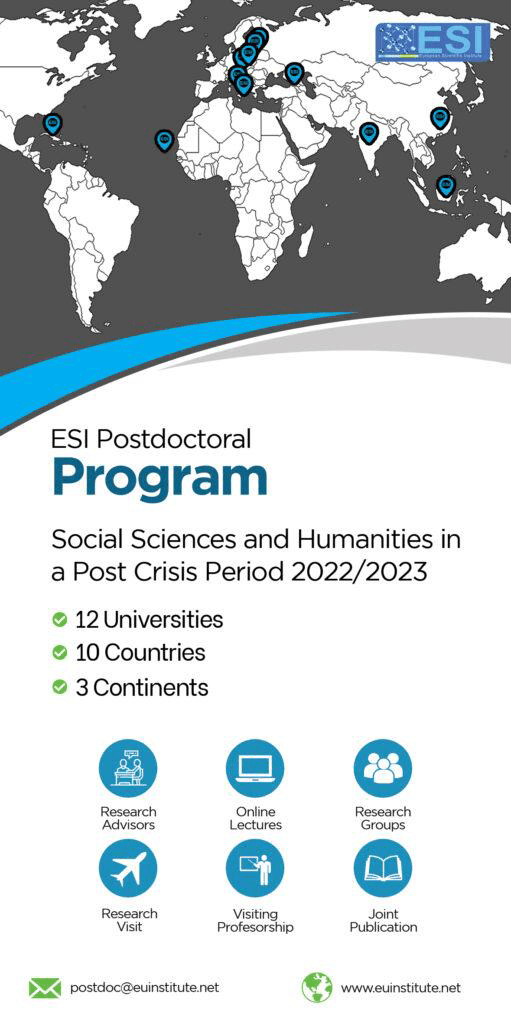Effect of two palms (Borassus aethiopum and Hyphaene thebaica) on the physicochemical characteristics of the soil of the agroforestry parklands in Gaya (Niger)
Abstract
The management of soil fertility is a major issue worldwide. The aim of this study was to determine the contribution of B. aethiopum and H. thebaica to soil fertility in south-west Niger. Using a complete randomized design with three replicates. 45 composite samples of 100 g of soil (36 below canopy and 9 outside) were collected between 0 and 20 cm depth and used to determine organic matter content, total carbon, total nitrogen and total sulfur, macronutrients (Mg, Ca, Na and K), Olsen phosphorus, micronutrients (Fe, Zn, Cu and Mn), pH, hygroscopic moisture, electrical conductivity and texture. The results showed that organic matter, C, N, Mn, Mg, Zn, hygroscopic moisture, P and Fe were significantly higher under the crowns of both species but with a higher effect of B. aethiopum canopy. Variations in their levels, with the exception of P, were explained by soil organic matter, to which they were significantly well correlated. This study showed that B. aethiopum and H. thebaica significantly improve fertility and contribute to soil stability. In view of these results, it is essential to devise policies for the rational management of forest resources as an alternative to the sustainable conservation of stability and crop soil fertility.
Downloads
Metrics
References
2. Abdourahamane, T. D. B., Nomaou, D. L., Yadji, G., Lamar, R., Bationo-Babou, A., Djamen, P., Adamou Didier, T., Nassirou, A. M., & Karimou, A. J. M. (2015b). Variations texturales et chimiques autour des touffes d’Hyphaene thebaica (Mart) des sols dans la région de Maradi (Niger). Algerian journal of Arid Environment, vol. 5, n°1, juin 2015: 40-55, ISSN 2170-1318, DOI/10.12816/0045906
3. Alvarez, F., Casanoves, F., & Suarez, J. C. (2021). Influence of scattered trees in grazing areas on soil properties in the Piedmont region of the Colombian Amazon. PLoS ONE, 16 (12): e0261612. https://doi.org/10.1371/journal.pone.0261612
4. Breman, H., & Kessler, J. J. (1995). Woody plants in agro-ecosystems of semi-arid regions with emphasis on the sahelian countries. Advanced series in agricultural sciences 23. Paris. Springer-Verlag, 340 p.
5. Camara, M. B. (2018). Caractérisation agroécologique et socio-économique des parcs agroforestiers a Elaeis guineensis jacq et Faidherbia albida (del.) Chev et leurs influences sur la productivité du riz pluvial en basse Casamance (Sénégal). Thèse de Doctorat, Université Assane Seck de Ziguinchor, nº d’ordre :13, 152p.
6. Camille, H. (2021). Impact du linéaire sous arboré sur les organismes et la fertilité du sol en système agroforestier tempéré. Sciences agricoles. Montpellier SupAgro, Français. NNT: 2021NSAM0006. tel-04031964
7. CILSS. (2016). Landscapes of West Africa –A Window on a Changing World. U.S, Geological Survey EROS. https://edcintl.cr.usgs.gov/downloads/sciweb1/shared/wafrica/ downloads/documents/Landscapes_of_West_Africa_Atlas_low_resolution_en.pdf
8. Dabin, B., & Segalen, P. (1977). Chapitre 2, le sol, sa définition, ses constituants, BDPA et ORSTOM. n°6, OVATY-Paris, 17p.
9. Dagnelie, P. (1988). Quelques notions d’expérimentation agronomique utilisées en recherche biopharmaceutique. Revue de statistique appliquée, tome 36, n° 2, 36-2-23-0, p23-36
10. Dollinger, J., & Jose, S. (2018). Agroforestry for soil health. Agroforest Syst 92, 213-219, https://doi.org/10.1007/s10457-018-0223-9
11. FAO. (2015). Évaluation des ressources forestières mondiales, Répertoire de données de FRA. (Rapport national du Niger), 101 p.
12. Feller, C. (1995). La matière organique du sol : un indicateur de la fertilité. Application aux zones sahélienne et soudanienne (Afrique de l’Ouest). Agriculture et développement n° 8 - Décembre 1995, 35-41.
13. Gonçalves, T. R., Vogado, R. F., Silva, R. D., Pompeu, R. C. F. F., Oda-Souza, M., & Souza, H. A. (2023). Agroforestry system improves soil carbon and nitrogen stocks in depth after land-use changes in the Brazilian semi-arid region. Rev Bras Cienc Solo. 47:e0220124. https://doi.org/10.36783/18069657rbcs20220124
14. Hoosbeek, M. R., Remme, R. P., & Rusch, G. M. (2018). Trees enhance soil carbon sequestration and nutrient cycling in a silvopastoral system in south-western Nicaragua. Agrofor Syst. https://doi.org/10.1007/s10457-016-0049-2
15. Hou, L., Zhang, Y., Li, Z., Shao, G., Song, L., & Sun, Q. (2021). Comparison of soil properties, understory vegetation species diversities and soil microbial diversities between Chinese Fir Plantation and Close-to-Natural Forest. Forests, 12, 632.
16. Kater, L. J. M., Kante, S., & Budelman, A. (1992). Karité (Vitellaria paradoxa) and Néré (Parkia biglobosa) associated with crops in South Mali. Agrof. Syst. 13, 89-105.
17. Kouyaté, A. M., Van Damme, P., Sarah Goyens De Neve S., & Hofman, G. (2007). Evaluation de la fertilité des sols à Detarium microcarpum Guill. & Perr. Tropicultura, 25, 2, 65-69.
18. Lindesay, W. L., & Norvell, W. A. (1978). Development of a DTPA soil test for zinc, iron, manganese and copper. soil science society of America journal. 42: 421-428
19. Liu, X., Tan, N., Zhou, G., Zhang, D., Zhang, Q., Liu, S., Chu, G., & Liu, J. (2021). Plant diversity and species turnover co-regulate soil nitrogen and phosphorus availability in Dinghushan forests, southern China. Plant Soil, 464, 257–272.
20. Ma, T., Deng, X., Chen, L., & Xiang, W. (2020). The soil properties and their effects on plant diversity in different degrees of rocky desertification. Sci. Total Environ. 736, 139667.
21. Moral, F. J., & Rebollo, F. J. (2017). Characterization of soil fertility using the Rasch model. Journal of Soil Science and Plant Nutrition, 17 (2), 486-498.
22. Moussa, H. (1997). Germination du palmier doum (Hyphaene thebaica Mart L.) et analyse de son interaction avec le mil (Pennisetum glaucum L. ) en zone semi-aride du Niger. (Thèse de Doctorat, Université Laval, Quebec), National library of Canada, 201p. 0-612-25442-9.
23. Mureva, A., & Ward, D. (2017). Soil microbial biomass and functional diversity in shrub-encroached grasslands along a precipitation gradient. Pedobiologia, 63, 37–45.
24. Niger. (2012). Plan Forestier National (PFN - Niger 2012-2021), FAO, Bureau d’Etudes en Ingénierie pour l’Environnement. Ministère de l’Hydraulique et de l’Environnement. Niamey, Niger. Rapport de synthèse. 98p
25. Niger. (2020). Stratégie et Plan National d’Adaptation face aux changements climatiques dans le secteur Agricole. SPN2A 2020-2035, Version finale - 10/04/2020, 85p.
26. Olsen, S. R., Cole, C. V., Watanare, F. S., & Dean, L. A. (1954). Estimation of available phosphorus in soil by extraction with sodium, bicarbonate. USDA cicular N°939, US Government Printing office, Washington. DC. 8P.
27. Potts, M., Gidi, V., Campbell, M., & Zureick, S. (2011). Niger: Too Little, Too Late, International Perspectives on Sexual and Reproductive Health, 37(2), 95-101.
28. Ramos, H. M. N., Vasconcelos, S. S., Kato, O. R., & Castellani, D. C. (2017). Above- and belowground carbon stocks of two organic, agroforestry-based oil palm production systems in eastern Amazonia. Agrofor Syst. Volume 92, pages 221–237, https://doi.org/10.1007/ s10457-017-0131-4
29. Rene, N. K., Guillaume, K. A., Boue, V. B. B. N., & Sidiky, B. (2021). Impact of Agroforestry Systems on Mineral Fertility of Soils under Cocoa Trees in Toumodi, Côte d'Ivoire. International Journal of Plant & Soil Science, 33(17): 10-22, no. 70773, ISSN: 2320-7035, DOI:10.9734/IJPSS/2021/v33i1730545
30. Salazar, P. C., Navarro-Cerrillo, R. M., Grados, N., Cruz, G., Barrón, V., & Villar, R. (2019). Tree size and leaf traits determine the fertility island effect in Prosopis pallida dryland forest in Northern Peru. Plant Soil, https://doi.org/10.1007/s11104-019-03965-7
31. Samba, S. A. N. (1997). Influence de Cordyla pinnata sur la fertilité d'un sol ferrugineux tropical et sur le mil et l'arachide dans un système agroforestier traditionnel au Sénégal. Thèse de doctorat à l’Université Laval, 0-612-25455-0, 180p
32. SONED-Afrique/MSA. (2020). Plan de développement communal (PDC) 2021-2025 de la Commune rurale de Tounouga. Version provisoire, révision 01, 112p.
33. SONED-Afrique/MSA. (2023). Plan de développement communal 2022-2026 de la commune rurale de Bengou. Version finale,116p.
34. Soro, D., Bakayoko, S., Dao, D., Bi, T. T., Angui, P., & Girardin, O. (2011). Diagnostic de fertilité du sol au centre-nord de la Côte d’Ivoire. Agronomie Africaine, 23 (3) : 205 - 215
35. Soumaré, A. (1996). Utilisation des éléments nutritifs par deux arbres du Sahel. Acacia albida et Sclerocarya birrea, Rapports PSS, 7-31.
36. Stone. D. (1993). Environmental Synopsis : Niger. The World Conservation Union, 44p.
37. Vairelles D, Lhomme J, Gelhaye D (1981) Modifications des caractéristiques Physico-chimique d’un sol brun acide des Ardennes primaires par la monoculture d’Epicéa commun. Ann. Sci. foret, 38 (2), 237-258.
38. Walkley, A., & Black, I. A. (1934). An examination of the Degtjareff method for determining soil organic matter and a proposed modificat of the chromic acid titration method soil science 37, 29-38.
39. Wu, H., Xiang, W., Ouyang, S., Forrester, D. I., Zhou, B., Chen, L., Ge, T., Lei, P., Chen, L., Zeng, Y. et al. (2019). Linkage between tree species richness and soil microbial diversity improves phosphorus bioavailability. Funct. Ecol, 33, 1549–1560.
40. Wu, S. H., Huang, B. H., Huang, C. L., Li, G., & Liao, P. C. (2018). The Aboveground Vegetation Type and Underground Soil Property Mediate the Divergence of Soil Microbiomes and the Biological Interactions. Microb. Ecol, 75, 434–446.
41. Zhao, Y., Zhao, M., Qi, L., Zhao, C., Zhang, W., Zhang, Y., Wen, W., & Yuan, J. (2022). Coupled relationship between soil physicochimical properties and plant diversity in the processus of vegetation restoration. Foreists, 13, 648, DOI:10.3390/f13050648
42. Zoubeirou, A. M., Abdou, M. M., Kadrir, A., Ambouta, J. M. K., & Dan Lamso, N. (2013). Effet de l’arbre d’Acacia senegalensis sur la fertilité des sols de gommeraies au Niger. Int. J. Biol. Chem. Sci. 7(6) :2328-2337, ISSN 1997-342X, http://ajol.info/index. php/ij bcs
Copyright (c) 2025 Abdoulaye Garba-Seyni, Hama Oumarou, Vidal Barron, Hamissou Amadou Mounkaila, Antonio Navajas, Rafael Villar

This work is licensed under a Creative Commons Attribution 4.0 International License.








